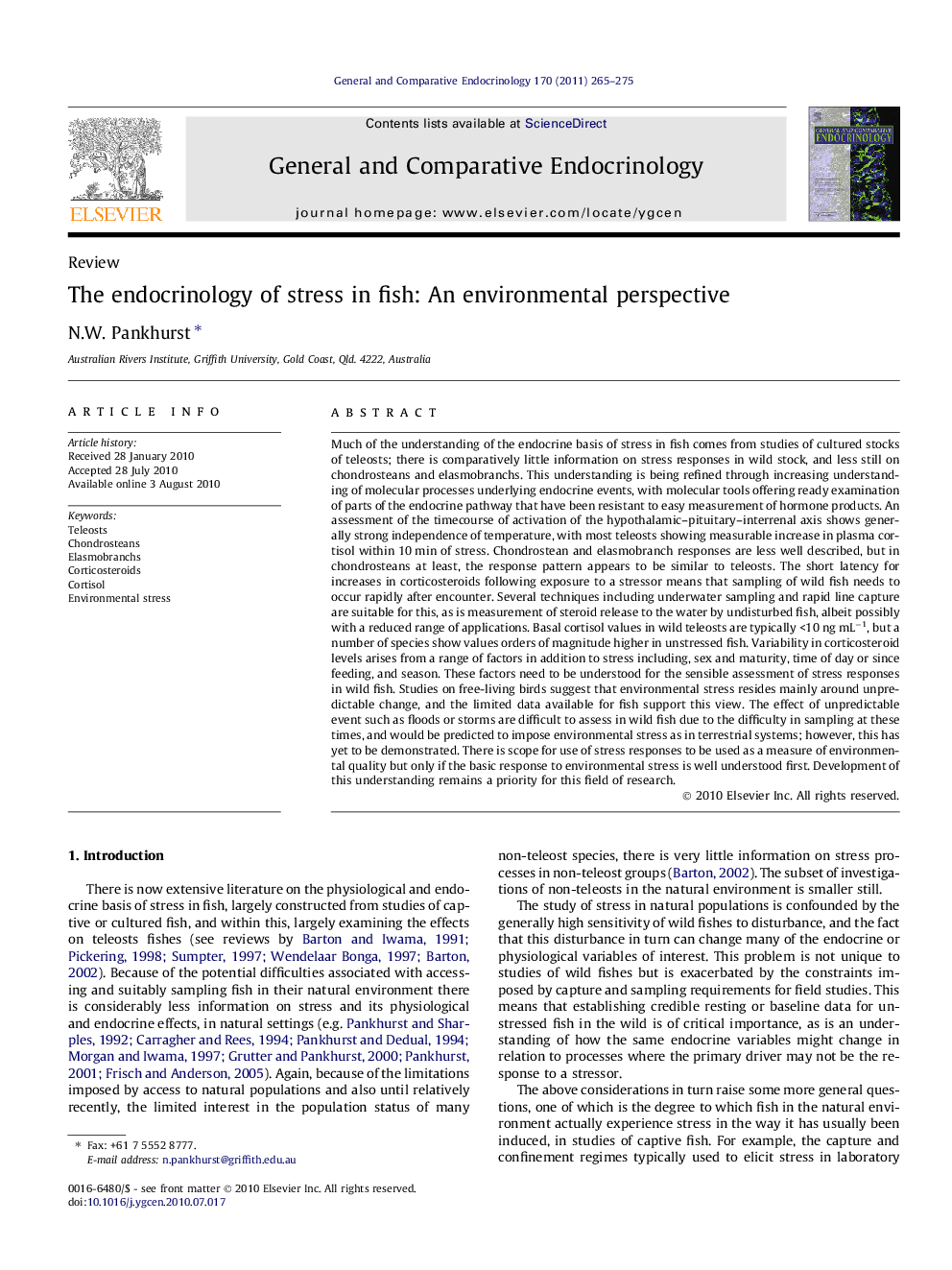| کد مقاله | کد نشریه | سال انتشار | مقاله انگلیسی | نسخه تمام متن |
|---|---|---|---|---|
| 2801066 | 1156141 | 2011 | 11 صفحه PDF | دانلود رایگان |

Much of the understanding of the endocrine basis of stress in fish comes from studies of cultured stocks of teleosts; there is comparatively little information on stress responses in wild stock, and less still on chondrosteans and elasmobranchs. This understanding is being refined through increasing understanding of molecular processes underlying endocrine events, with molecular tools offering ready examination of parts of the endocrine pathway that have been resistant to easy measurement of hormone products. An assessment of the timecourse of activation of the hypothalamic–pituitary–interrenal axis shows generally strong independence of temperature, with most teleosts showing measurable increase in plasma cortisol within 10 min of stress. Chondrostean and elasmobranch responses are less well described, but in chondrosteans at least, the response pattern appears to be similar to teleosts. The short latency for increases in corticosteroids following exposure to a stressor means that sampling of wild fish needs to occur rapidly after encounter. Several techniques including underwater sampling and rapid line capture are suitable for this, as is measurement of steroid release to the water by undisturbed fish, albeit possibly with a reduced range of applications. Basal cortisol values in wild teleosts are typically <10 ng mL−1, but a number of species show values orders of magnitude higher in unstressed fish. Variability in corticosteroid levels arises from a range of factors in addition to stress including, sex and maturity, time of day or since feeding, and season. These factors need to be understood for the sensible assessment of stress responses in wild fish. Studies on free-living birds suggest that environmental stress resides mainly around unpredictable change, and the limited data available for fish support this view. The effect of unpredictable event such as floods or storms are difficult to assess in wild fish due to the difficulty in sampling at these times, and would be predicted to impose environmental stress as in terrestrial systems; however, this has yet to be demonstrated. There is scope for use of stress responses to be used as a measure of environmental quality but only if the basic response to environmental stress is well understood first. Development of this understanding remains a priority for this field of research.
Journal: General and Comparative Endocrinology - Volume 170, Issue 2, 15 January 2011, Pages 265–275